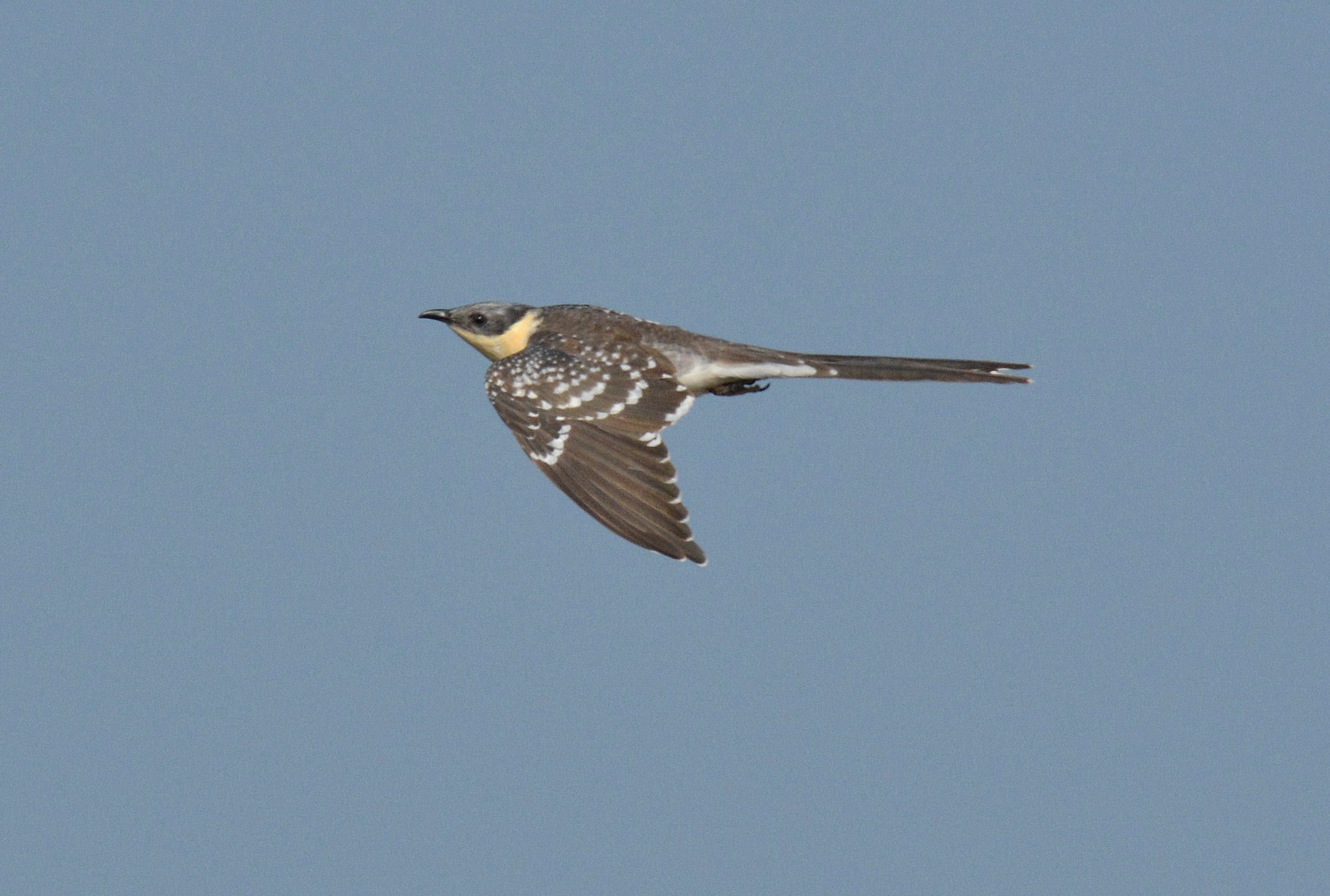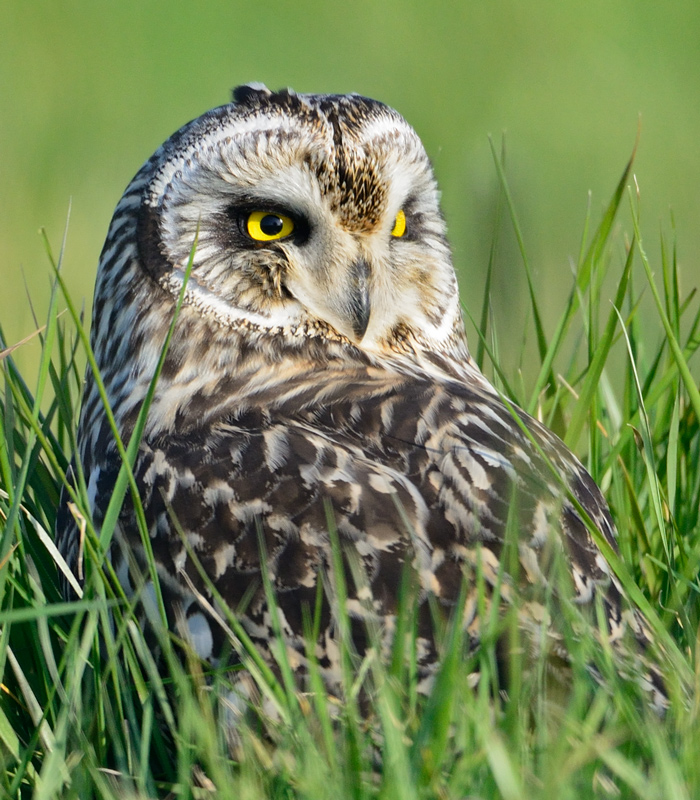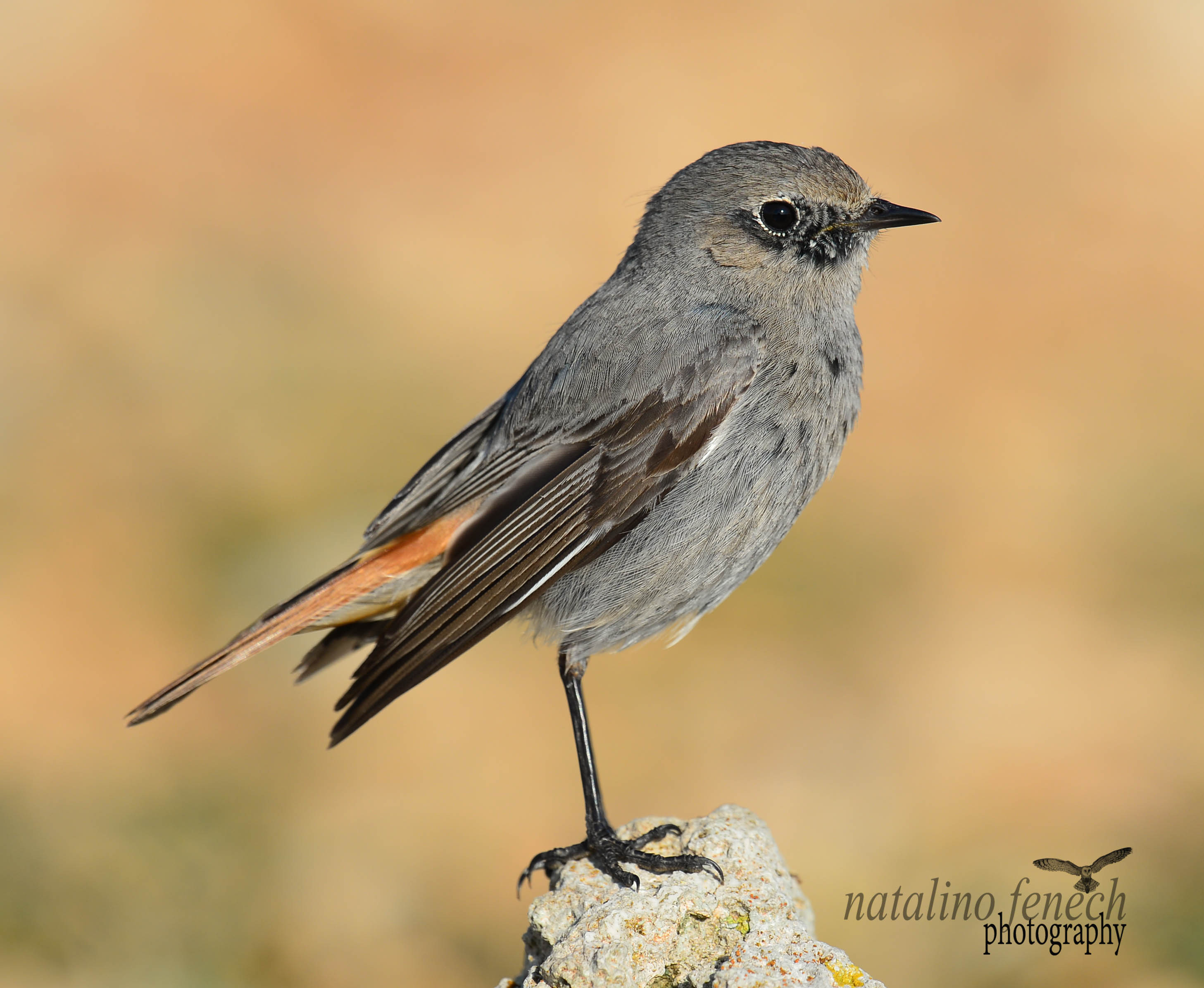The week at a glance
- Great Spotted Cuckoo still in Pembrokeshire
- First Night Heron of 2014 graces the Isles of Scilly
- American Coot and Pied-billed Grebe still in Scotland
- Bedraggled House Finch in Kent
Though once again many areas were bathed in early sunshine and unusually warm temperatures (20°C was again reached in some parts over the weekend) it was, bird-wise, a reasonably quiet period that really typified that regular 'lull' between the end of winter and the beginning of spring. When the weather reminds you more of a warm early May day, it's easy to start scratching your head, wondering why there aren't migrants everywhere. Then you remember that it's only mid-March and the first wave are only really just arriving. It's worth keeping in mind that, this time last year, we were battling through a particularly cold March that saw much of the country suffering from snow and sub-zero temperatures … such is the fickleness of British weather!
Though not really present in great numbers yet, Wheatears and Sand Martins reached as far north as Argyll and Highland, while White Wagtails, Little Ringed Plovers and Garganey were the other early migrants reasonably well established. A handful of Willow Warbler reports included one as far north as Lothian on 17th, Yellow Wagtails were in Pembrokeshire, Northamptonshire and Norfolk and a Common Whitethroat was singing in London on 17th. House Martin records came from the Isles of Scilly and Dorset, while Swallows reached northern England.

Wheatear, Draycote Water, Warwickshire (Photo: Kath Everitt)

Garganey, Wicken Fen NT, Cambridgeshire (Photo: Michael Hoare)

Garganey, Cross Ness, Greater London (Photo: Richard Bonser)
Scarcities included the first Night Heron of 2014, seen in flight over Hugh Town, St Mary's (Scilly), on 17th and again over Lower Moors at dusk on 18th. Two Hoopoes were on Lundy (Devon) on 18th following one seen there on 15th; others were still at Ballycotton (Cork) on 12th and near Polgigga (Cornwall) to 17th, while wintering individuals included the Kent bird at Snodland on 16th, a new individual at Leswalt (Dumfries & Galloway), reported from 14th — it has apparently been present since November 2013. In Pembrokeshire, the Wryneck hung around at St Brides until 13th, while not too far away, the week's most popular fixture — the mobile Great Spotted Cuckoo at Giltar Point — spent the week around the golf course between there and Penally, even making a trip across to Caldey Island for a few hours on Saturday morning. A chiffchaff species, initially touted as Iberian, spent the day at Ruislip Lido (London) on 16th but was later thought to be an aberrant Common.

Hoopoe, Polgigga, Cornwall (Photo: Ashley Hugo)

Great Spotted Cuckoo, Giltar Point, Pembrokeshire (Photo: Neil Hughes)

Great Spotted Cuckoo, Penally, Pembrokeshire (Photo: Mike Trew)
Ever-present fixtures included the American Coot at Loch Flemington (Highland) and the Pied-billed Grebe over at Balranald, North Uist (Outer Hebs) — both were still present on 18th. News from Dumfries & Galloway confirmed that there were indeed two Red-breasted Geese knocking around with the Solway Barnacles — both ringed and unringed geese were seen at Mersehead RSPB on 15th. Three Cackling Geese were on Healy's Island, near Kilkee (Clare), on 12th, with two still there the following day; a Richardson's Cackler was also still in County Sligo on 16th. Argyll's Todd's Canada Goose was at Drumlemble on 18th, while the Canada Goose was still kicking about on the Mullet Peninsula (Mayo) the same day. Eight Black Brants included a new bird at Ventry (Kerry) on 12th; twos were at King's Lynn (Norfolk) and on Jersey.
The Black Duck was still frequenting ponds and the river at Anaheilt (Highland) until at least 15th, while a new drake American Wigeon was discovered on the Ouse Washes at Earith (Cambs) on 14th-16th. Others remained on South Uist and in Highland. Further evidence of northbound wildfowl saw new drake Green-winged Teal at Morton Bagot (Worcs) on 16th-17th, Fen Drayton Pits (Cambs) on 16th and on Fair Isle on 18th, in addition to several lingering birds. The only drake Lesser Scaup was that at Tittesworth Reservoir (Staffs) and just three Ring-necked Ducks were noted — in Ayrshire, County Kerry and on the Outer Hebrides.

Green-winged Teal, Jarrow, Durham (Photo: Jarraman)

Ring-necked Duck, Lough Leane, Kerry (Photo: Ed Carty)
Two female King Eider remained off the Lothian coastline, with a third just across the Firth of Forth in Largo Bay (Fife); a new female was offshore near Narin (Donegal) while County Cork's female lingered at Cahermore. Breaking the monotony was a drake at Uyeasound, Unst (Shetland) from 15th. Four drake Surf Scoters were off Pensarn (Conwy) throughout the week, with others still in Fife, Lothian, Cornwall and County Cork.

King Eider, Uyeasound, Unst, Shetland (Photo: Brydon Thomason)
A scattering of lingering Great White Egrets included birds far as north as Aberdeenshire, while plenty of Glossy Ibis included Irish birds in Counties Cork, Kerry, Limerick, Sligo (2) and Londonderry (2); in Scotland, the Kinross bird was last seen on 14th and another remained on North Ronaldsay (Orkney). Buckinghamshire's Cattle Egret stayed near Steeple Claydon to 17th; another was on Jersey. Shorebirds were limited to Hampshire's Long-billed Dowitcher and Lesser Yellowlegs remaining at Keyhaven Marshes and Lepe respectively.

Glossy Ibis, Lowdham, Nottinghamshire (Photo: Jenny Cleary)
Argyll's American Herring Gull was last seen in the Campbeltown area on 15th, with a new first-winter at Killybegs (Donegal) on 11th (but not reported until the weekend). The Laughing Gull remained at Ballycotton (Cork) on 13th and Cardiff's Bonaparte's Gull was still in the bay on 16th. At least four Ring-billed Gulls were in Britain, with double figures in Ireland.

Ring-billed Gull, Cork City, Cork (Photo: Sean Cronin)

Kumlien's Gull, Loch Ryan, Dumfries & Galloway (Photo: Chris Hind)
Richard's Pipits were new at Sheringham (Norfolk) on 12th and Pleinmont (Guernsey) on 15th, with the Hampshire bird again seen occasionally at Keyhaven Marshes. Presumed Siberian Lesser Whitethroats were still in Egginton (Derbys) and Sheffield (S Yorks), with further wintering warblers including the West Midlands' Dusky still at Great Barr on 17th, both Hume's Leaf Warblers still in Kent early on (Dungeness on 12th, and Ramsgate to 14th) and Yellow-browed Warblers in Cornwall, Somerset and Worcestershire (with another belatedly reported in Shetland on Bressay on 11th).

Richard's Pipit, Pleinmont, Guernsey (Photo: Mark Guppy)

Yellow-browed Warbler, Uffmoor Wood, Worcestershire (Photo: Bill Dykes)
In Cheshire, Coues's Arctic Redpoll was belatedly reported as visiting feeders in a Macclesfield garden on 8th, being seen again on 16th. Up to 14 Two-barred Crossbills remained in the Forest of Dean (Glos) but were increasingly segregated as the week wore on; six remained at Broomhead Reservoir (S Yorks), males were at Broughton (Lincs) and Hemsted Forest (Kent) and the female was at Leith Hill Wood (Surrey) to 18th. Four Parrot Crossbills were reported from Upper Sheringham (Norfolk) on 16th, with three also seen in Budby South Forest (Notts) during the week. Finally, an apparent female House Finch — in a rather appalling state of moult — was in a private garden at Tunbridge Wells (Kent) on 14th-15th.

Coues's Arctic Redpoll, Macclesfield, Cheshire (Photo: John Adshead)

Two-barred Crossbill, Broughton, Lincolnshire (Photo: Mark Johnson)
Photo of the Week

Great Spotted Cuckoo, Penally, Pembrokeshire (Photo: Mitch)
For UK birders, the arrival of a Great Spotted Cuckoo will always generate excitement: apart from their rarity, these are good-sized, distinctive and charismatic birds. After a gap of almost five years since the last British record, the discovery of one of these birds in Pembrokeshire by Christine Jones (finder's account available on the BirdGuides webzine) led to the understandable flow of visitors and photos. In fact, at the time of writing, five of our top 10 most popular photo uploads this week have been of this bird, topped by this flight shot from local birder Robert 'Mitch' Mitchell. Incidentally, Mitch had bagged a great flight shot of a Common Cuckoo last June, which he uploaded to Iris, so the practice obviously stood him in good stead for when this rarer relative turned up! With the characteristic features picked out by sunlight against a rich blue sky, this well-posed flight shot must be making some people think about Iberian holidays...
Other notable images

Goosander, Llanberis, Gwynedd (Photo: Dave Williams)

Short-eared Owl, Shingle Street, Suffolk (Photo: Steve)

Hoopoe, Polgigga, Cornwall (Photo: Ashley Hugo)

Corn Bunting, undisclosed site, Suffolk (Photo: Nick Brown)

Skylark, Westruther, Borders (Photo: Ron Mccombe)

Dipper, undisclosed site, Derbyshire (Photo: Mike McKenzie)

Black Redstart, Malta (Photo: Natalino Fenech)

Water Rail, Upton Warren NR (Permit Only), Worcestershire (Photo: Kath Everitt)

Chaffinch, undisclosed site, Norfolk (Photo: Matt Crosby)

Greenshank, National Wetlands Centre, Carmarthen (Photo: Wayne Davies)

Blue Tit, Bawdsey, Suffolk (Photo: John Richardson)


